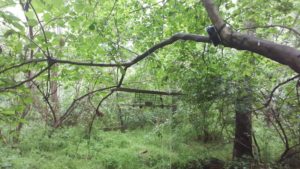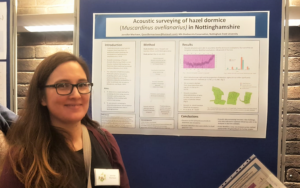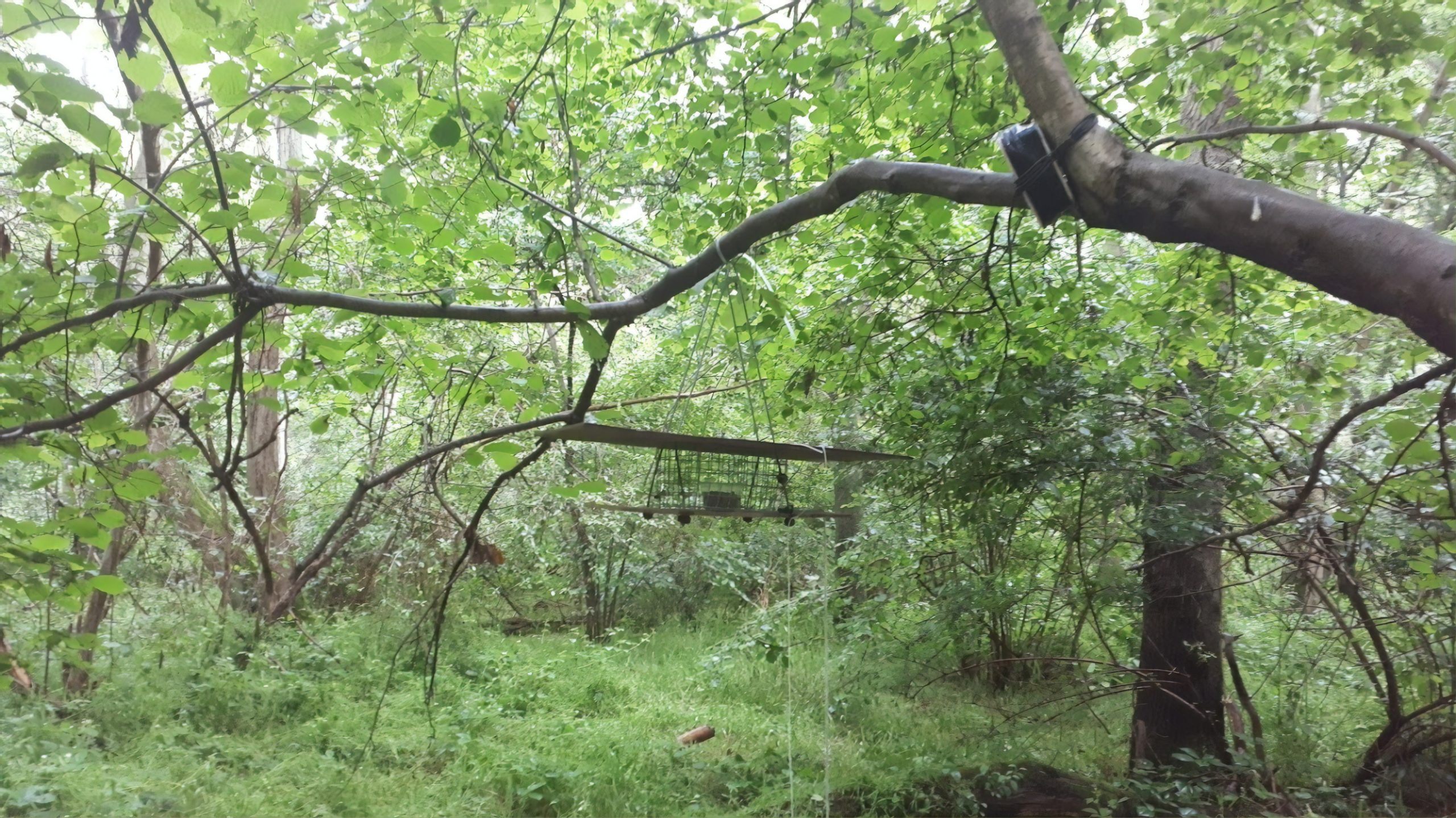2020 Awards Winner’s Spotlight: Postgraduate Student Project
Jennifer MacIsaac (Nottingham Trent University)
Acoustic Surveying of hazel dormice (Muscardinus avellanarius) in Nottinghamshire: A preliminary study
This award was sponsored by ![]()
Acoustic wildlife surveying is becoming increasingly popular among researchers and practitioners, as shown in the recent increase in the number of published studies utilising this method. However, it has not been used to survey dormice and there is little in the scientific literature regarding the vocalisations of wild hazel dormice. The study investigates a novel and non- invasive method of efficiently surveying hazel dormice using acoustic recorders.
 Jennifer’s dissertation discusses the growing body of scientific literature involving the use of acoustic recorders and automated species detectors to survey wildlife. The benefits of this method over traditional survey methods are highlighted and related to existing hazel dormouse survey techniques. Current challenges with acoustic surveying and automated species detection are also explored and the limitations of this method are acknowledged.
Jennifer’s dissertation discusses the growing body of scientific literature involving the use of acoustic recorders and automated species detectors to survey wildlife. The benefits of this method over traditional survey methods are highlighted and related to existing hazel dormouse survey techniques. Current challenges with acoustic surveying and automated species detection are also explored and the limitations of this method are acknowledged.
Jennifer’s dissertation proposes a number of hypotheses that are logically derived from her excellent understanding of dormouse ecology and the study sites.
Dormouse vocalisations recorded and identified during this study were used to build an automated species detector in the R package MonitoR (Hafner and Katz, 2018). MonitoR uses acoustic template matching to detect vocalisations and to date, there are been no published examples using this method to detect dormouse vocalisations or using acoustic surveying to estimate dormouse site occupancy. The statistical analyses used provide meaningful results to test the project’s hypotheses.

The results presented in this dissertation, supported by a wide range of well designed maps and figures, are very well evaluated in the context of the findings of previous studies involving acoustic surveying and automated species detection. The results demonstrate that acoustic recorders can be used to effectively detect hazel dormice presence and to determine site occupancy. As this method is non-invasive, a survey licence would not be required. Additionally, the methodology described in this study could be adapted to detect other dormice species that are vocal and difficult to detect using traditional survey methods.
The presentation of this piece of work is excellent with the use of subheadings and figures giving the project a clear and logical structure. The standard of writing is very high throughout and a good range of sources were used and cited well.
Over the last few weeks, we have been posting further information on each of the 2020 CIEEM Awards Winners over on our blog. A full recording of the event is now available to watch online. Further details on each project/individual is set out in our 2020 CIEEM Awards Booklet.
